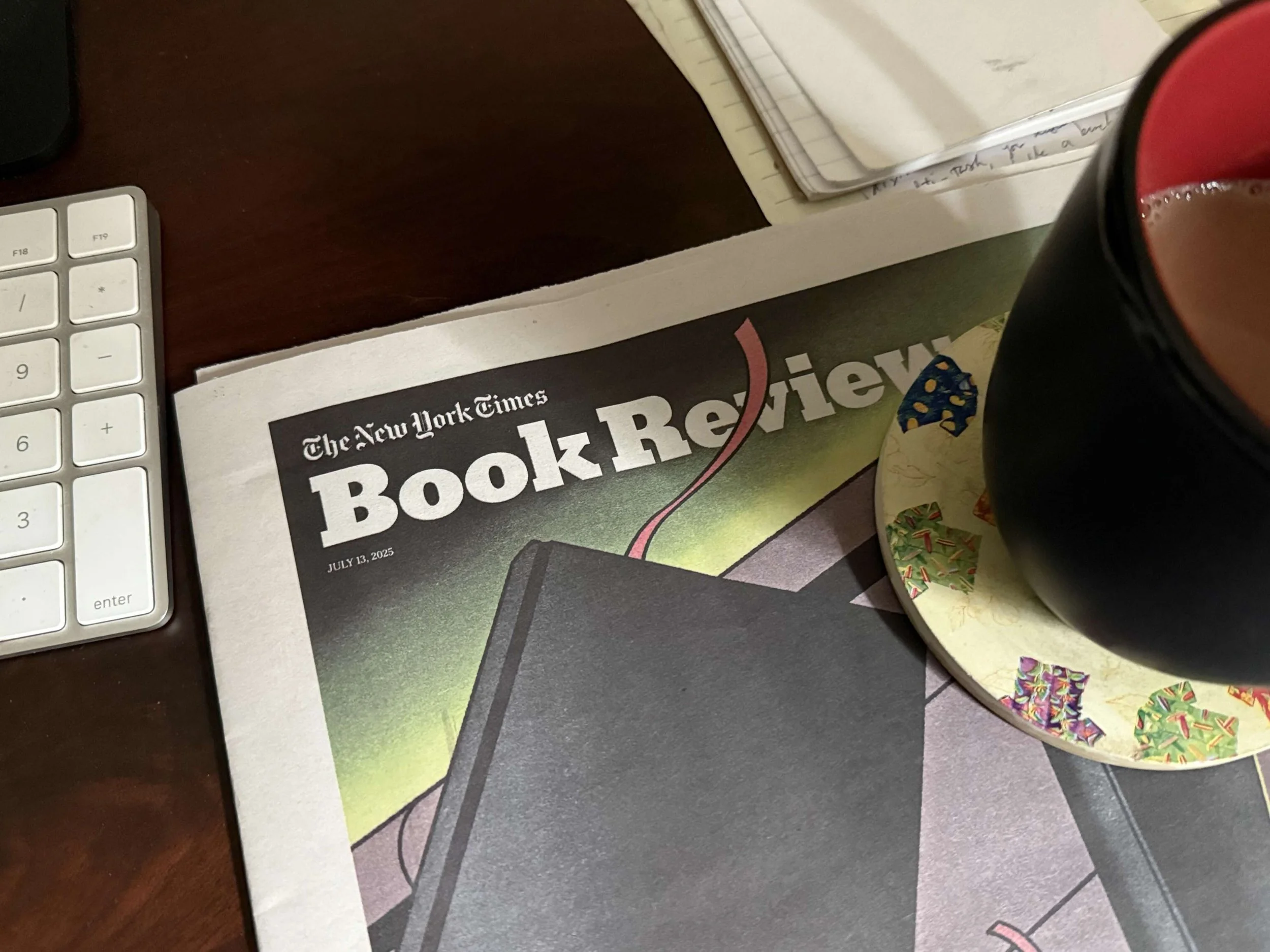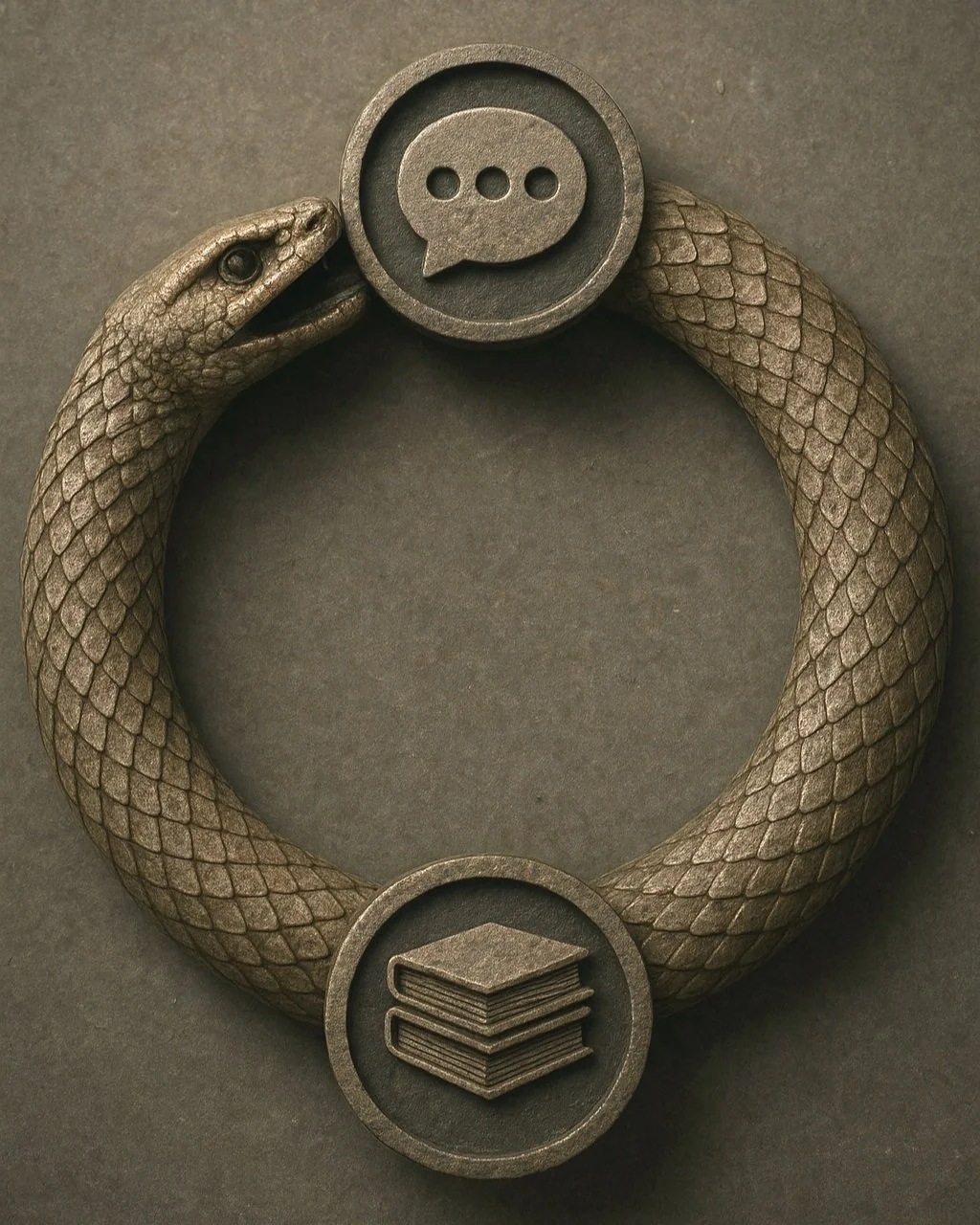FASTER THAN LIGHT
WELCOME TO OUR MONTHLY BLOG ABOUT THE INTERSECTION OF CREATIVITY AND CULTURE
The scene was a little strange. It was odd to see so many peppers in a such a big pile, spread across nearly ten feet of tabletop. It also became several things at the same time. In one way the scene was singular, a mass of tangled, elongated green shapes connected into one unified object: a pepper sculpture. In another way it showcased a profoundly beautiful way of seeing nuances and differences of so many things that appeared the same, but were actually distinct and unique: peppers as stars in the infinite sky.
The Book Review aggregates a collection of contemporary thinkers who have spent more than just a a few minutes focused on a particular subject or narrative. To write a book means an author has typically labored to research, excavate, and shape what they want to say. It is a condensation of intense focus, and often a much deeper dive into a sliver of culture than any short-form anything.
Imagine a creative process that essentially feeds on little more than what’s cool right now, a millimeter deep understanding of our collective roots and our personal roots. A culture that doesn’t understand its own references, that trades primarily in disposable memes, is a culture doomed to being controlled by whatever political forces ultimately own the platforms of distribution.
The number one thing we collectively did with our Promethean information powers was unhinge our jaws and try to swallow as much newly emerging social media as possible—voraciously, absent-mindedly, relentlessly. We became boa constrictors incapacitated by trying to swallow not simply a goat, but an elephant.
What does it matter if I skip a single, socially lubricating word when I’m talking to a massive, barely competent LLM housed in the cloud? I might be saying words, but nobody’s ears are really listening to what I’m saying. If we’re being honest about this, who cares?, especially considering that I’m only speaking to a digital assistant. Read on, because I believe it means a lot, and I’ll explain why.
Ideas are no longer bound by time and space and opportunity. In fact, since you’re likely reading this on a hand-held device, you’re intimately aware of just how many ideas are pulling at your attention right now. Too many, most likely. We must make choices.
Ordinary things are everywhere. The benches, the goofy elephant picture, the water fountain, even the tropical leaves in all directions were not in themselves the source of inspiration. Inspiration comes from following through with goals. It comes from doing the work. It comes from noticing events of the day, the chaos of monkeys howling in the trees, the acrid tang of a poorly maintained pick-up truck’s exhaust, the sweet burst of a freshly picked orange.
With everyone clicking and posting photos all day long with their cell phones, the challenge of finding interesting photographs isn’t especially hard. I’m not worried about finding a singular giraffe image, or any other easily identifiable asset that I may need for a quick turnaround production. I worry for reasons that lurk beneath the surface like shallow rocks at the shoreline.
Trips to a ball park and trips to a museum require visitors to be physically present. In the same way as watching a game on television, seeing a painting on a screen is a wholly different experience from seeing it in real life.










There are gestures of science fiction here, but this story definitively takes place in the real world. The externalities finds stable footing in the world of science, and as a robust skeleton for more delicate interior considerations, that stability adds mass and relevance. The natural world, and those people dedicated to understanding its intricacies, serves as a narrative backdrop. Through the eyes of the book’s short cast of characters we are reminded that there are dramatic and profound alternatives to the exceedingly complex lives most of us live in the industrialized world.